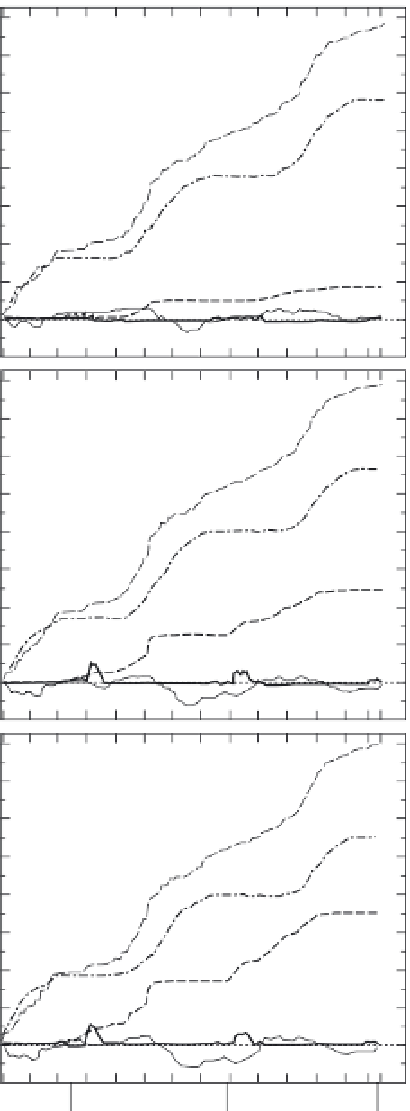Environmental Engineering Reference
In-Depth Information
1800
5.6 Discussion
(a)
Goose Pond Prairie
1575
1350
Precipitation
Winter surface-water storage
Soil-water storage changes
Drainage
Evapotranspiration
The ZFP and Darcy methods both require
measurements or estimates of the hydraulic
gradient; therefore, the methods are often
applied in tandem. Hydraulic gradients in the
unsaturated zone can be measured with clus-
ters of instruments such as tensiometers or
heat-dissipation probes. However, if the gradi-
ent is small in magnitude, it can be difficult
to accurately quantify because of instrument
error and natural heterogeneity in unsaturat-
ed-zone sediments. Neither method is limited
in terms of the time scales over which they
can be applied. They are particularly useful
for estimating drainage from a fast-moving
wetting front propagated by an individual
storm (assuming automatic recording of data).
Both methods can provide useful insights on
r e c h a r g e p r o c e s s e s , a l t h o u g h t h e y o n l y p r o d u c e
point estimates of drainage. The ZFP method
cannot be applied when drainage occurs as
steady flow, whereas the Darcy method can
measure drainage occurring as steady as well
as transient flow. When the unit hydraulic gra-
dient assumption is invoked with the Darcy
method, steady drainage is assumed. Both ZFP
and Darcy methods are relatively expensive
to apply. Values of hydraulic conductivity are
required for the Darcy method; this parameter
is difficult to accurately determine, and it can
vary substantially in natural systems.
A wide variety of lysimeters have been
applied in hydrologic studies, ranging from
simple collection devices, such as pan lysim-
eters, to very expensive computer-monitored
systems. Carefully constructed and main-
tained lysimeters can provide precise measure-
ments of drainage, but by their mere presence,
lysimeters can disrupt the natural flow system.
Lysimeters can be used in almost any envi-
ronment, and if their surface areas are large
enough they can capture both preferential and
matrix flow.
1125
900
675
450
225
0
-225
1800
(b) No-tillage maize
1575
1350
1125
900
675
450
225
0
-225
1800
(c) Chisel-plow maize
1575
1350
1125
900
675
450
225
0
-225
26 35 45
313233343111 21
31
41 49
1
1995
1996
1997
1998
Week
Figure 5.17
Water budget for (a) prairie site, (b)
no-tillage maize site, and (c) chisel-plow maize site in central
Wisconsin (after Brye
et al
.,
2000
). Imbalance in the water
budgets is attributed to runoff for the prairie and no-tillage
site and to runon from melting snow at the chisel-plow site.







